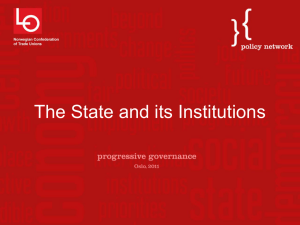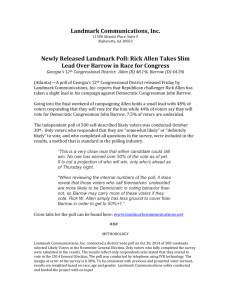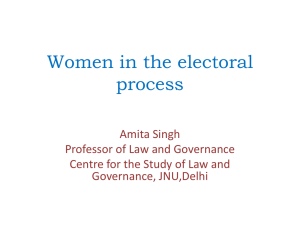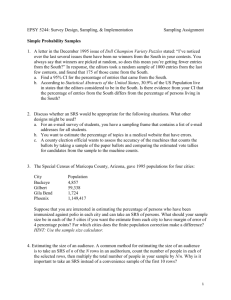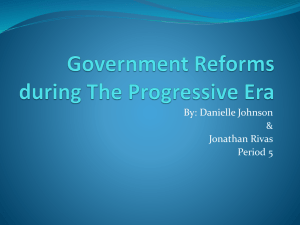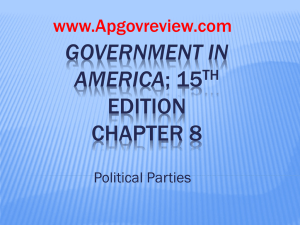no one wants higher taxes!!!!!!!
advertisement
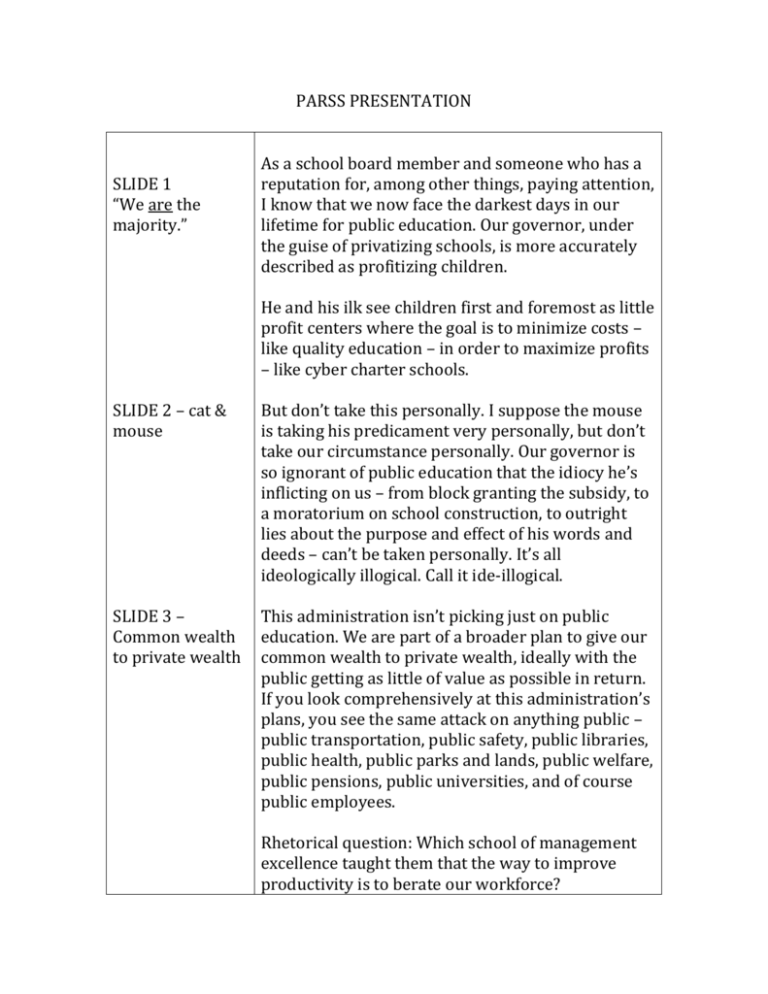
PARSS PRESENTATION SLIDE 1 “We are the majority.” As a school board member and someone who has a reputation for, among other things, paying attention, I know that we now face the darkest days in our lifetime for public education. Our governor, under the guise of privatizing schools, is more accurately described as profitizing children. He and his ilk see children first and foremost as little profit centers where the goal is to minimize costs – like quality education – in order to maximize profits – like cyber charter schools. SLIDE 2 – cat & mouse But don’t take this personally. I suppose the mouse is taking his predicament very personally, but don’t take our circumstance personally. Our governor is so ignorant of public education that the idiocy he’s inflicting on us – from block granting the subsidy, to a moratorium on school construction, to outright lies about the purpose and effect of his words and deeds – can’t be taken personally. It’s all ideologically illogical. Call it ide-illogical. SLIDE 3 – Common wealth to private wealth This administration isn’t picking just on public education. We are part of a broader plan to give our common wealth to private wealth, ideally with the public getting as little of value as possible in return. If you look comprehensively at this administration’s plans, you see the same attack on anything public – public transportation, public safety, public libraries, public health, public parks and lands, public welfare, public pensions, public universities, and of course public employees. Rhetorical question: Which school of management excellence taught them that the way to improve productivity is to berate our workforce? The most stunning aspect of this agenda, though, isn’t its entirely destructive nature – that it offers nothing better in place of what it seeks to destroy. SLIDE 4 – The majority of Pennsylvania Voters Support Public Education It is that this agenda, especially with regard to public education, is exactly the opposite of what the great majority of PA voters want. In the Commonwealth and country created for the express purpose of enabling the people to govern themselves through majority rule and minority consent, this administration is openly contemptuous of what most PA voters want. We don’t have to stand for that, and the rest of my presentation will offer ideas for how we can, in a very positive way, fight back. Let me present you with the vision for public education that most voters want. As I do, think about how likely that vision is to exist unless we do what our government refuses to do, and that is to insist in every way possible the majority of PA voters get the schools and the government they want. Let’s begin with funding. Last spring as the Corbett Administration and it accomplices in the Legislature were preparing the budget, the debate was what to cut in order to balance it. SLIDE 5 – PA Voters support school funding Public opinion about that was very clear: 78% of PA voters told the Franklin & Marshall Poll last March that they did not want to cut funding for public schools in order to balance the budget. Only 19% supported such cuts. The governor and legislature – which was then sitting on a slush fund of $188.5 million – represented the 19%. One year later, the result is nearly identical. This year’s February F&M poll found 79% of PA voters still don’t want to cut funding for public schools; only 19% do; and 2% are undecided. If they have their way, the governor and legislature will once again represent the 19%. But that’s just money. What about the curriculum? How strong is the back-to-basics crowd? Or better yet – how strong is the understanding that a 19th Century education isn’t good enough in the 21st Century? SLIDE 6 – The The arts are a popular target. The cost-cutters arts are essential. slander the arts as fluff. But most voters don’t. In a November poll, 81% of voters said that arts – visual, music, theatre, dance – are essential to a comprehensive K-12 education. Only 17% disagree. SLIDE 7 – 93% support a broad curriculum And in the world of “choice,” there is even stronger support for a wide and deep curriculum. In the same poll, an amazing 93% of voters said that any public school choice policies should ensure that all students have opportunities for “advanced placement courses, career and technical courses, arts courses, foreign language courses and, if they have completed high school graduation requirements before the completion of their senior year, academically appropriate college courses.” A measly 4% disagree. What about whether people think they’re getting value for their money? SLIDE 8 – Voters supported increases in 2008, 2009 and The same poll found that 64% of voters supported the $750 million increase in funding for public schools during 2008, 2009, and 2010. Only 28% didn’t. 2010. SLIDE 9 – 62% support equity Finally, what about the idea that the state should narrow the gap between the haves and have-nots, an issue that is dear to PARSS? In November, 62% of PA voters said the state should “take steps to increase state funding to poorer school districts as a way to reduce … funding disparity, even if it means less funding will be available for state increases to wealthier districts.” Only 28% embrace the social Darwinism that is willing to deny opportunity to those children who need it most and who are not responsible for their economic circumstances. Remember: this public commitment to public education comes after three of the worst economic years in American history. Still, voters get it in ways that are deep and profound. Despite all of the bashing, all of the distortion, and all of the outright lies about public schools, majorities that most politicians only dream of in their own elections continue to support us. SLIDE 10 – Our Bully Pulpit Now the question is how to deploy that support. I’ll give you an example of one way to do it. At last week’s meeting of the Carlisle school board, we advanced to PlanCon D with a $45 million project to upgrade and expand our two middle schools, which are pretty much as they were when they were built 33 years ago. In the audience were two members of the public, both elders, who come to every meeting to complain about something. Most recently, they’ve been complaining about the middle school project, saying that this is not the time to do such things. Coincidentally, Les Baer was there to get our approval to refinance some 2007 bonds, saving us at least $200,000. He made the point that interest rates are now at 45-year lows, making this the best time for the middle school projects. SLIDE 11 – Use every opportunity All that’s good. But at the end of the meeting when board members have a chance to talk about anything they want, I decided to use some public opinion research as a way to illustrate how far from the mainstream our two concerned citizens are. First, I recited that 79% of PA voters don’t want to cut state funding for public schools, as I mentioned above. Then I quoted the poll from last November, which found that 82% of PA voters “want lawmakers to maintain funding for public even in bad times and even if it means cutting other programs and raising taxes and fees.” Only 14% are unwilling to do these things to support public schools, and only 4% don’t know. I don’t know whether our two concerned citizens got the message or not, but I’m going to keep sending it. At each meeting, I will find something from public opinion research that supports public schools, and I will make sure everyone in the room hears it. No one else will, and people need to know they’re not alone. All people get from the media is the left and right. They talk about and write about the extremes, which leaves ordinary people wondering who cares about them. SLIDE 12 – Free markets That’s one tactic. Another is to speak their language. Last spring, as a candidate for school board, I went to the preliminary budget adoption meeting. There were about 100 people there with a line-up of professional complainers with the usual demands: don’t raise taxes; cut the fluff out of the curriculum; stop paying teachers and administrators so much; and cut payroll and pension costs by imposing a wage freeze. I introduced myself as a candidate and made four points under the heading of Free Markets. 1. The free market has examined our financial management and has given us a high bond rating that reduces the cost to our taxpayers. We also consistently get clean audits. We try to keep a large fund balance, because that also contributes to a good bond rating. The free market says we’re well-managed. 2. The free market wants high school graduates who have a broad and deep educational experience, not a bare-bones curriculum. We need to do what the free market requires and not disadvantage our students when they are applying for increasingly competitive admission to the college of their choice. 3. The free market does not value one-year decisions for operations that are as complex as a school district and clients who are as complicated as children. It values the kind of forward vision that we try to effect despite having as partners a governor and legislature who act as though planning is a four-letter word. 4. The free market determines how we compensate our professional staff. We compete with other school districts for talent the way any business does. In all of our contract negotiations, we strive to be in the middle of the pack among the school districts in our area, letting the free market determine what the outer limits are. I concluded by asking the board to raise taxes as high as the Act 1 index would allow, which was 3.5%, because that is what success in the free market requires. I got elected anyway. The Tea Party folks threatened to run a write-in campaign against me, but nothing materialized. Back to public opinion…. SLIDE 13 – “Why don’t our representatives actually represent us?” Last summer, I was appalled at the debt-ceiling crisis. You may recall that a handful of extremist members of Congress took the United States to the brink of default and created real chaos in foreign markets out of their slavish commitment to ideological purity. No more debt. Let the house of cards collapse and damn the collateral damage. What I found most appalling, though, was that this debate raged while 70% of American voters understood that to solve our financial problems required both cuts in spending and higher taxes. So why did we go through all this turmoil? Why don’t our representatives actually represent us? There are many reasons for this, but the bottom line is that we don’t insist on it. The media cover the left and the right, but they don’t cover the center. Forget what a bone-headed business model that is, which explains why newspapers are in decline. We have to force them to cover the middle. Somewhere along the way, we lost sight of something very important: The bedrock idea of American democracy is that the people have the right to govern themselves, and the role of government is to help us do it, not prevent us from doing it. It’s to represent us, not rule us. The best part of talking about public opinion research is that it puts our opponents on the defensive for a change. There is no more powerful election-year argument against vouchers, for example, than that voters oppose them by a 2:1 margin, and have for the past 20 years. When you align yourself with public opinion, you get to ask lawmakers, “Why don’t you do what the public wants you to do?” And when someone argues with you about it, you get to say, “Pilgrim, your argument isn’t with me. It’s with your fellow citizens. When you convince them, you’ll convince me.” We are a society that is being dominated by the margins. It’s time to restore the margins to the margins, and the only way to do that is to become aggressive at making sure public opinion is part of the discussion at every opportunity. Here are a few examples: Especially during budget season, look for opportunities to get public opinion about school funding into every board meeting, every newspaper story, and every speech you give to community audiences. You can even use negative polling to your advantage. When polls and pols say that a majority of people are concerned about violence in schools, say that you’re with the majority and ask where the state’s plan is to solve the problem of violence so that you are not tagged unfairly with that complaint. When a poll says that people want to equalize resources for all students regardless of where they live, publicly ask your lawmakers to come to a board meeting and tell the public what they’re doing to make that happen. If your newspaper allows online comments, look for opportunities to post comments about what the public wants, according to the kind of opinion research Terry Madonna does. SLIDE 14 – “NO ONE WANTS HIGHER TAXES!!!!!!!!!” I especially like posting comments in reply to the ranters and haters. When they scream in all capitals, underlined, italicized, and bolded with an apparent seizure disorder on the exclamation point key that “NO ONE WANTS HIGHER TAXES!!!!!!!,” I calmly reply that, in fact, a large majority of people support higher state taxes for public schools and a few other things like roads and bridges. I recite the numbers and I provide a link to the polls with an invitation for them to read the polls for themselves. I began using this tactic after The Philadelphia Inquirer published an essay I wrote making the case for higher taxes based solely on public opinion research. SLIDE 15 – Echo chamber A day or so later, I got an email from a reader: “…where exactly was this poll taken??? Cal-State Berkley Campus, or maybe an Occupy Philly / Wall Street encampment?? …Was it 'truly' a fair sample of "The Majority of PA Citizenry'! Somehow, I think not...” I sent him links to the actual polls and assured him that all of the polls I cited meet national standards for transparency, methodology, and reliability. He thanked me for the reply and promised to read the polls, but I never heard back from him. This gentleman is an example of a terribly destructive tendency of people to live in echo chambers. They rarely hear or see anything that doesn’t agree with their biases. As a result, they truly believe that their views are consistent with the majority. They are genuinely shocked to find out that they have gone down a rabbit hole. We do such people a service when we honor the twin concepts of majority rule and minority consent. We also make our own lives easier and increase the chances of success with the students we educate. Well, it’s all well and good for me – a confessed policy wonk – to recite these facts and figures. But where are they when you need them? SLIDE 16 – web site They’re at www.themajoritypartypa.com. The Majority Party PA is a new political action committee I formed to give power to public opinion. I’m happy to talk about that in Q&A if you want, but for now, all you need to know is that every poll of PA voters on ordinary public policy issues is compiled at www.themajoritypartypa.com. There is a section on education, and it contains both summaries of the findings and links to the actual polls. There is no other web site that provides all of this information in one place. So use it for all it’s worth. And if you subscribe – it’s free – you will get notices when there is new opinion research. SLIDE 17 – cat & mouse We have tremendous support among the public. They know that when they look around at all they value, 90% of the people who created it were educated in public schools. If we can reinforce those attitudes and show that we value the opinion of our fellow citizens, we may just change our assumptions about who’s the cat and who’s the mouse. SLIDE 18 – We are the majority party. Q&A

